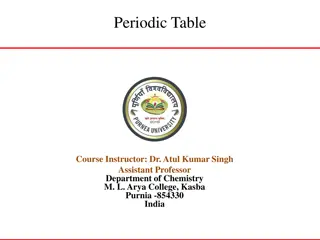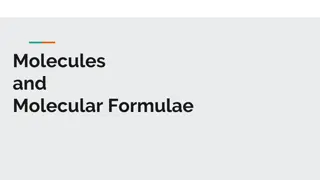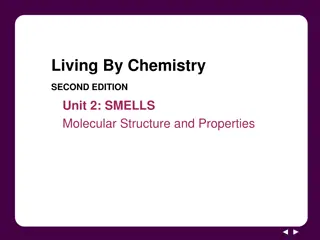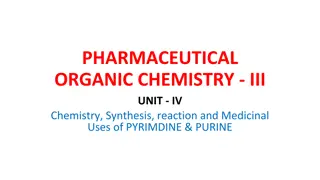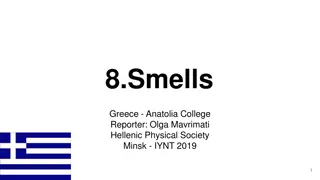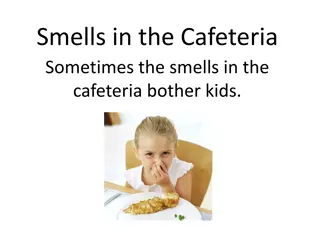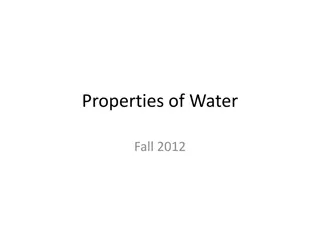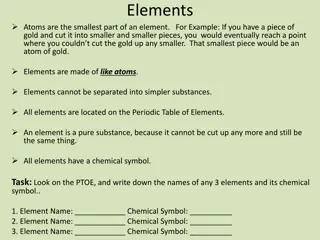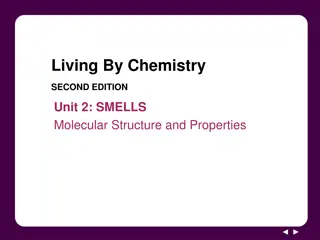Exploring Smells: Molecules and Properties in Chemistry
Dive into the world of molecular structures and smells in chemistry with a focus on distinguishing between molecules with the same formula but different properties. Understand the significance of structural formulas, recognize isomers, and predict the smells of new molecules based on their chemical compositions. Explore how molecules can have diverse odors despite sharing the same molecular formula.
Download Presentation

Please find below an Image/Link to download the presentation.
The content on the website is provided AS IS for your information and personal use only. It may not be sold, licensed, or shared on other websites without obtaining consent from the author. Download presentation by click this link. If you encounter any issues during the download, it is possible that the publisher has removed the file from their server.
E N D
Presentation Transcript
Living By Chemistry SECOND EDITION Unit 2: SMELLS Molecular Structure and Properties
Lesson 29: Molecules in Two Dimensions Structural Formulas
ChemCatalyst Predict the smells of these three new molecules. Provide evidence to support your prediction. Vial F: ethyl pentanoate C7H14O2 Vial G: butyric acid C4H8O2 Vial H: ethyl acetate C4H8O2
Key Question How can molecules with the same molecular formula be different?
You will be able to: describe the difference between structural formulas and molecular formulas recognize isomers
Prepare for the Activity Work in groups of four.
Discussion Notes Even though the molecules in vials G and H have identical molecular formulas, they have different smells and therefore must be different somehow. A structural formula is a two-dimensional drawing of a molecule showing how the atoms in a molecule are connected.
Discussion Notes (cont.) Structural formula: A drawing or diagram that a chemist uses to show how the atoms in a molecule are connected. Each line represents a covalent bond. There are several ways to draw the same structural formula without changing the identity of the molecule.
Discussion Notes (cont.) When two molecules have the same molecular formula but different structural formulas, they are called isomers of each other. Isomers: Molecules with the same molecular formula but different structural formulas.
Discussion Notes (cont.) Molecules can smell different even if they have the same molecular formula. Molecules can smell similar even if they have different molecular formulas.
Wrap Up How can molecules with the same molecular formula be different? Structural formulas show how the atoms in a molecule are connected. A molecular formula can be associated with more than one structural formula. Isomers are molecules with identical molecular formulas but different structural formulas. The smell of a molecule is a property that appears to be related to its structure.
Check-In For each compound, predict the smell or describe what information you would want in order to predict the smell. a. C6H12O2 b. C6H15N





